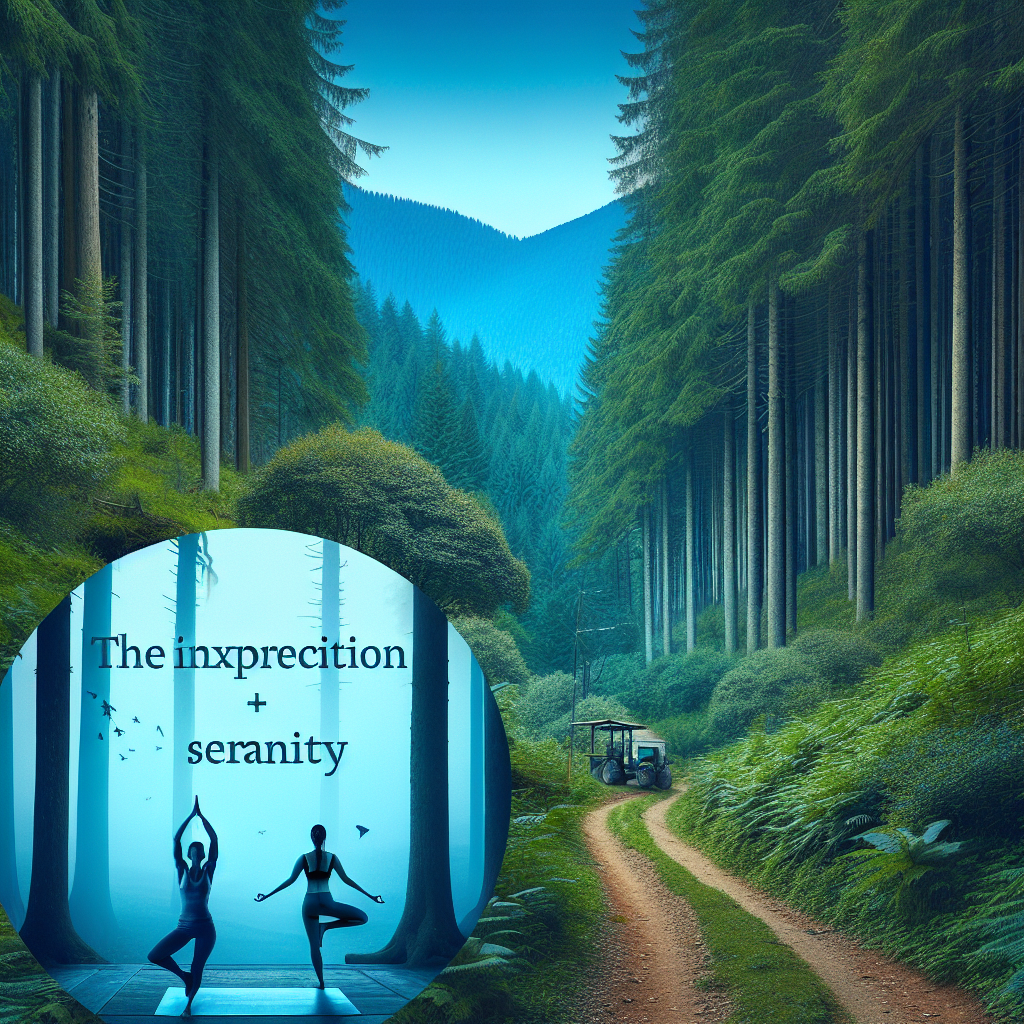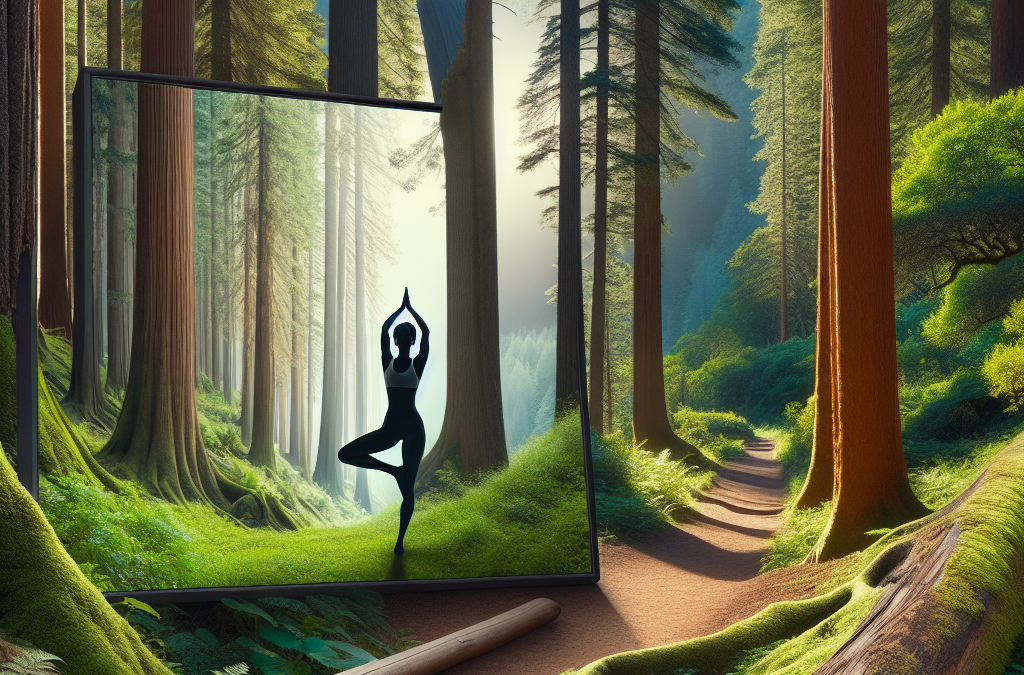As you sit there, perhaps dreaming about your next outdoor adventure, imagine combining two rejuvenating activities – hiking and yoga. The article, “Hiking and Yoga: A Holistic Approach to The Outdoors”, offers insights into how engaging in both activities can significantly benefit your mental and physical health, as well as deepen your connection with nature. Break away from the stereotypical ‘yoga in a studio’ image, and picture yourself stretching into a sun salutation atop a scenic hill after an invigorating hike. Get ready to grasp the potential of blending these two disciplines, transforming your outdoor exploration into a more holistic experience.

Understanding the Concept of Holistic Approach
Holistic Approach is a philosophy or a way of life that engages the whole person – the body, mind, and spirit. It respects the interconnectedness of all these aspects.
What is a holistic approach?
In a holistic approach, an individual is seen as an integrated whole rather than just a sum of parts. Every aspect of one’s being is acknowledged and nurtured – physical health, mental clarity, emotional stability, and spiritual wellbeing. This approach focuses on maintaining a balanced and harmonious state across all these components, inherently promoting one’s overall health and wellbeing.
Interconnection between body, mind, and nature in a holistic approach
In the holistic approach, the body, mind, and nature remain interconnected. Your physical state can affect your mental state and vice versa. Nature plays a supportive role in this relationship by providing a nurturing and healing environment. Understanding this interconnection enables you to achieve a balanced state of health and wellbeing.
Benefits of a holistic approach to the outdoors
A holistic approach to the outdoors includes activities that nurture your mind, body, and spirit while connecting you to nature. This approach can reduce stress, improve fitness, foster mindfulness, enhance self-awareness, and promote overall health. It brings you closer to nature and helps you appreciate its beauty and serenity, thereby contributing to energizing and calming your mind and body.
Exploring Hiking as a Holistic Activity
Hiking is a holistic activity that offers benefits for your body and mind. It helps to understand the multidimensional aspects of hiking to fully appreciate this activity.
Hiking: an activity for body and mind
Hiking engages your body and stimulates your mind. It tests your physical endurance and capacity while simultaneously inviting you to appreciate nature’s grandeur and serenity. This dual engagement of mind and body promotes a deep sense of accomplishment and peace.
Physical, mental and emotional benefits of hiking
Hiking offers various physical benefits—improved cardiovascular health, muscular strength, flexibility, and improved balance. Mentally, it enhances focus, reduces stress, and promotes a sense of tranquility. Emotionally, tackling challenging trails can build confidence, instill a sense of achievement, and foster resilience.
How hiking connects you with nature and contributes to holistic wellbeing
Hiking immerses you in nature, allowing you to witness its beauty and draw from its vitality. It also provides solitude and space for introspection, contributing to mental clarity and emotional stability. Ultimately, hiking serves as a doorway to holistic wellbeing, integrating body, mind, spirit, and nature.
Yoga – A Promoter of Holistic Health
Yoga is an ancient practice that harmonizes the body, mind, and spirit, promoting holistic health.
Understanding Yoga and its principles
Yoga is more than physical exercise; it’s a discipline that cultivates balance and harmonizes physical, mental, and spiritual aspects. Its principles of ethical standards (Yamas and Niyamas), physical postures (Asanas), breath control (Pranayama), sensory withdrawal (Pratyahara), concentration (Dharana), meditation (Dhyana), and self-realization (Samadhi) pave the path towards holistic wellbeing.
The physical and mental health advantages of Yoga
Physically, practicing yoga promotes flexibility, strength, balance, and enhances overall fitness. On a mental level, yoga helps alleviate stress, fosters mental clarity, improves concentration, and promotes peace and calmness.
Yoga’s role in realizing self and universe connectivity
Yoga deepens self-awareness, helping you to understand yourself better. It also encourages oneness and connectivity with the universe, bringing about a heightened sense of harmony, peace, and spiritual wellness.
Integrating Hiking and Yoga: A Complementary Practice
To maximize the benefits of both, one could integrate yoga and hiking into a complementary practice.
The synergy of Yoga and Hiking
Hiking enables you to explore the physical terrain, while yoga directs the exploration inward. Both activities harmoniously connect you with nature, helping to balance the inner and outer worlds. This complementary practice can enhance your whole wellbeing.
Benefits of combining Yoga and Hiking
The combination of the cardiovascular workout from hiking and the flexibility and balance from yoga provide a full-body workout. This combination also supports mental clarity and emotional resilience, enhances mindfulness, and deepens your connection with nature.
Practical tips to incorporate Yoga into your Hiking regime
Begin your hike with a short yoga warm-up to prepare your body. Pause for yoga breaks during your climb to stretch and breathe. At your hike’s peak, take time to meditate and enjoy nature’s serenity. Consider ending your hike with a gentle yoga cool-down, reflecting on your experience as you relax and rejuvenate.

The Ritual of Breathing: Uniting Yoga and Hiking
Breathing plays a critical role in yoga and hiking, contributing to a holistic outdoor adventure.
Importance of focused breathing in Yoga
Breathing is an integral part of yoga, aiding in concentration, relaxation, and flow during postures. Controlled and deliberate breaths can maximize the benefits of each yoga pose, helping to maintain equilibrium between the physical and mental aspects.
Breathing techniques during hiking
During hiking, breathing techniques can help regulate your energy and stamina. Deep and rhythmic breathing can enhance your performance, while calming breaths can foster tranquility and mindfulness.
How a controlled breathing routine aids in a holistic outdoor adventure
A controlled breathing routine can heighten your outdoor experience. It provides an avenue for focusing, initiating an inward journey while physically on an external path. It can increase your endurance, promote mindfulness, and enhance your overall hiking and yoga experience.
Asanas Ideal for Hiking
Integrating certain yoga poses into your hiking routine can specifically target and strengthen muscles used in hiking.
Yoga poses that strengthen overworked hikers’ muscles
Asanas such as downward dog, warrior I and II, tree pose, and bridge pose can strengthen and stretch the legs, hips, and back—areas often stressed during hiking.
Yoga asanas to enhance your hiking stamina
Core strengthening poses like plank and boat pose can develop your stamina for longer and challenging trails. Standing poses such as mountain pose can improve balance, a crucial aspect of hiking.
Cool-down yoga asanas post-hiking
Cool-down asanas like child’s pose, legs up the wall pose, and corpse pose can help your body relax, rebalance, and recuperate after a strenuous hike, reducing the chances of muscle soreness and fatigue.
Mindfulness And Meditation On Trail
Utilizing mindfulness and meditation while hiking can deepen your connection with nature and enhance your hiking experience.
Understanding the concept of mindfulness
Mindfulness involves being fully present in the current moment, consciously aware of your physical sensations, thoughts and emotions without judgment.
The role of mindfulness in hiking and yoga
In both hiking and yoga, mindfulness promotes a heightened sense of self-awareness, fosters mental clarity, reduces stress, and allows for a richer experience. It facilitates the synchronization of breath and movement, deepening the connection between body and mind.
Techniques to promote mindful hiking and the benefits thereof
Engage your senses—listen to nature’s sounds, feel the ground under your feet, observe the beauty around you. Practice mindful breathing and incorporate trail-side yoga for mindful pauses. The benefits of such techniques involve a deeper appreciation of nature’s magnificence, improved concentration, and emotional balance.
Creating a Hiking and Yoga Routine
Creating a routine can help you fully experience the benefits of integrating hiking and yoga.
Planning your routine for maximum benefits
Based on your health, fitness levels, and personal preferences, tailor your routine to integrate yoga and hiking effectively. Be flexible in your approach, adapting it as per your comfort and environment.
Equipment needed for your outdoor yoga and hiking routine
Essential yoga equipment like a travel yoga mat, comfortable yoga attire, and basic hiking gear including appropriate shoes, clothing and a backpack with essential supplies are recommended for your outdoor routine.
Adjusting your routine as per seasons
Adjust your routine based on the season and weather. Plan for indoor yoga sessions during rainy days or winter and opt for early morning hikes during summers.
Safety Measures and Precautions
Take necessary safety precautions while practicing yoga and hiking to prevent injuries and ensure a successful holistic outdoor experience.
Ensuring safety during hiking and yoga
Understand your body limits, practice appropriate warming up before and cooling down after the session, stay hydrated, and carry necessary supplies and first aid.
Common hiking injuries and how yoga can help
Common hiking injuries include sprained ankles, muscle fatigue and cramps, falls and scrapes. Regular yoga can strengthen your muscles, increase flexibility, improve balance, and build resilience, helping prevent such injuries.
Importance of professional guidance
Working under professional guidance can help you learn correct yoga postures, understand safety guidelines for hiking, assess your fitness levels, and tailor routines to your specific needs.
Personal Experiences and Stories
Hearing personal experiences can inspire you to adopt the holistic outdoor approach.
Exemplary stories of people who adopted the holistic outdoors approach
The world is full of inspiring stories of people who have found solace, purpose, and renewed vitality through the integration of yoga, hiking, and the outdoors. These stories motivate and guide us towards creating our own holistic outdoor experiences.
How hiking and yoga changed their lives
Most people narrate that the combination of hiking and yoga led to remarkable transformations in their physical health, mental peace, and overall life perspective. They talk about increased strength, resilience, emotional stability, self-awareness, and a profound connectedness with nature and themselves.
Advice from experienced hikers and yogis
Experienced hikers and yogis advise beginners to start slow, listen to their bodies, be consistent, and above all, enjoy the journey. They recommend adopting the holistic outdoors approach not just as a lifestyle, but as a philosophy for lifelong health, peace, and spiritual wellbeing.

